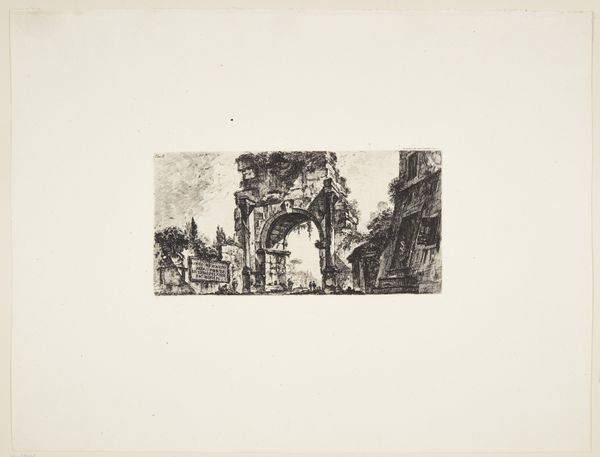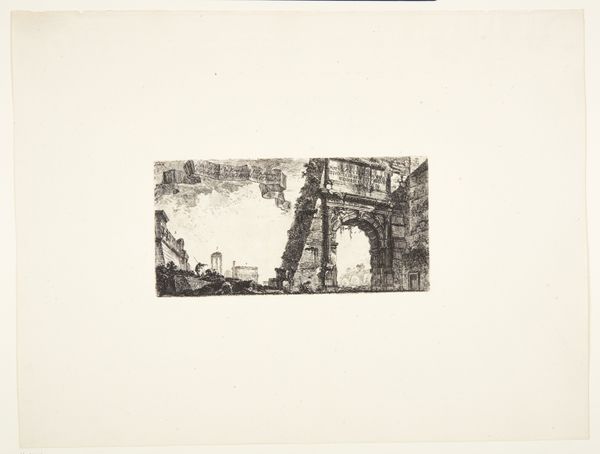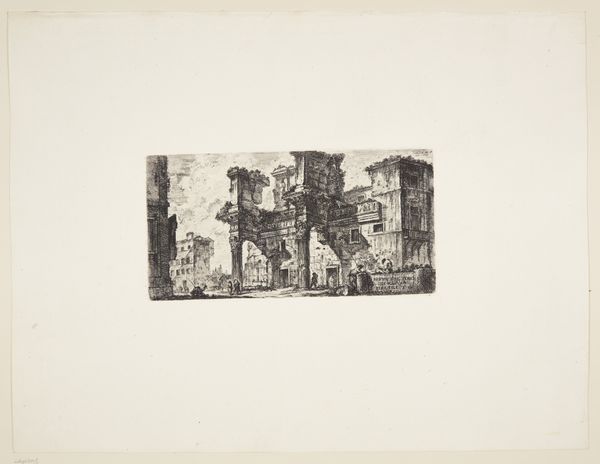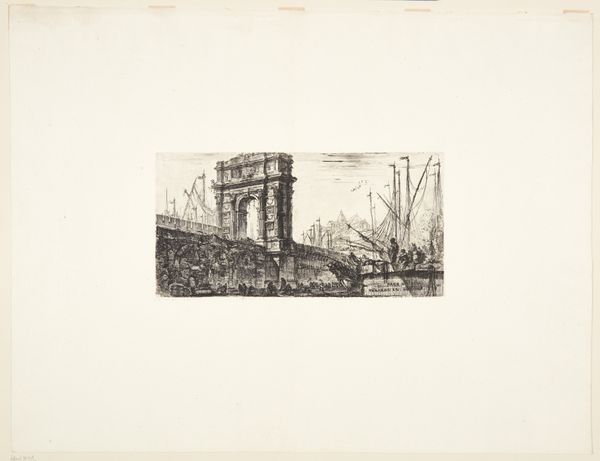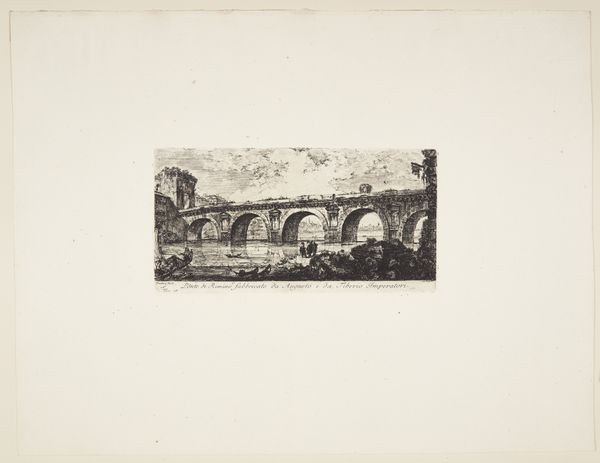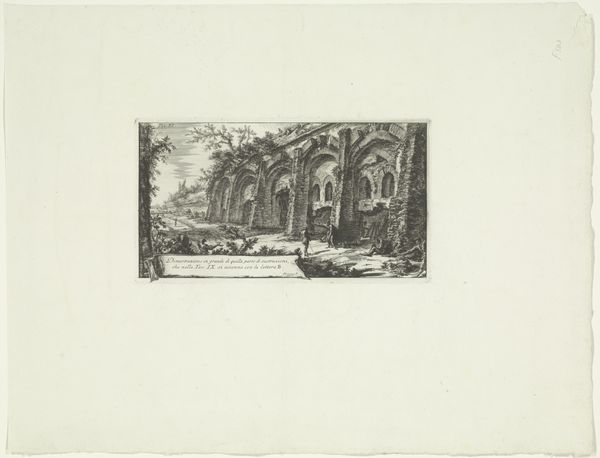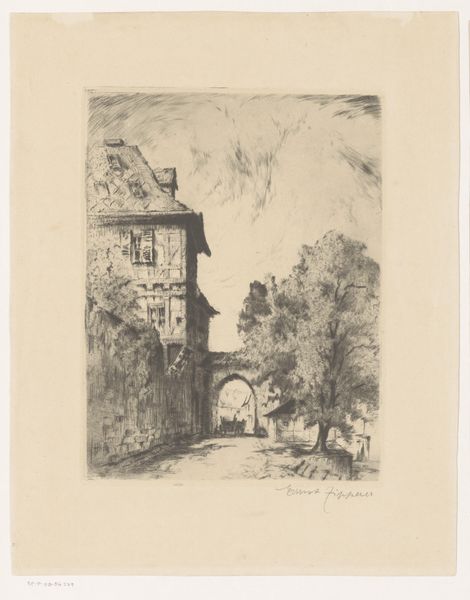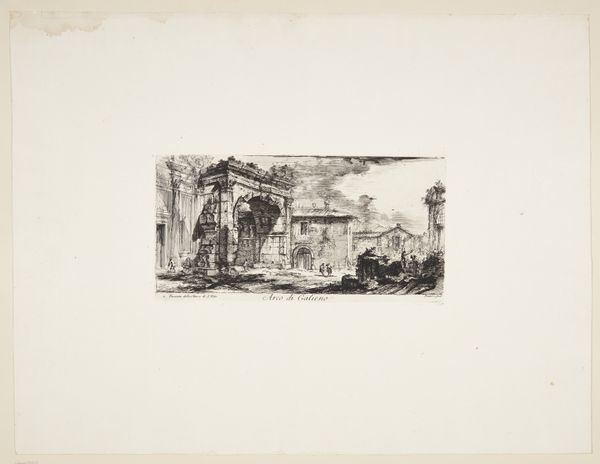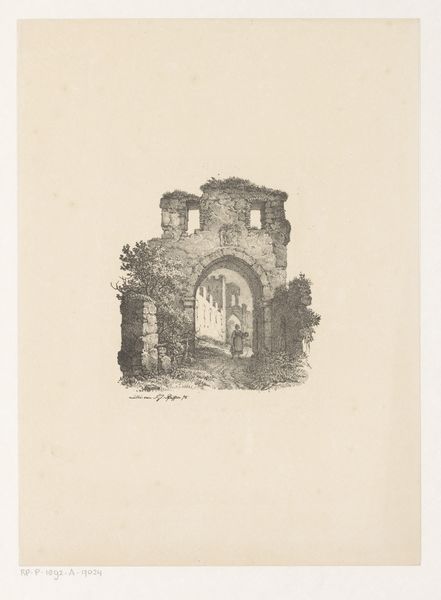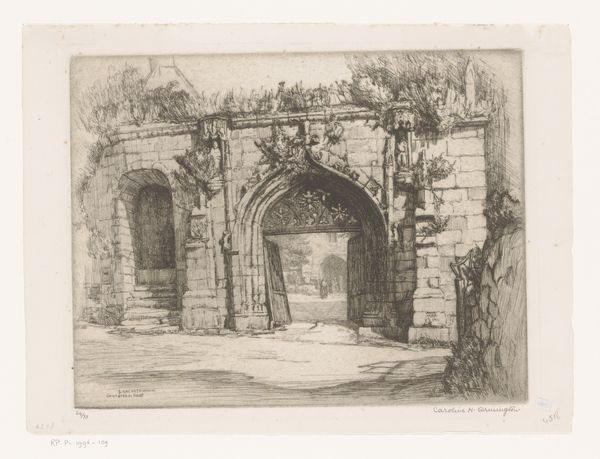
print, etching, engraving, architecture
# print
#
etching
#
landscape
#
romanesque
#
engraving
#
architecture
Dimensions: 136 mm (height) x 264 mm (width) (plademaal)
Giovanni Battista Piranesi made this etching of the Temple of Janus in Rome sometime in the 18th century. Piranesi was a master of the etching process, using it to explore his fascination with classical architecture. The print medium itself – easily reproducible, a kind of shadow of the thing itself – mirrors the ruin that is depicted. Note the rich blacks achieved through the use of acid to bite into the metal plate, and the contrasting delicate lines that describe the crumbling stonework. Piranesi's choice of etching was significant. Unlike painting or sculpture, printmaking was relatively democratic, making images accessible to a wider audience. It’s no coincidence that he made many images of Rome. By documenting these architectural relics, Piranesi wasn't just preserving them on paper, he was also participating in a broader cultural conversation about history, memory, and the passage of time. In his hands, etching becomes more than just a reproductive technique; it becomes a tool for engaging with the past and shaping its legacy.
Comments
No comments
Be the first to comment and join the conversation on the ultimate creative platform.
